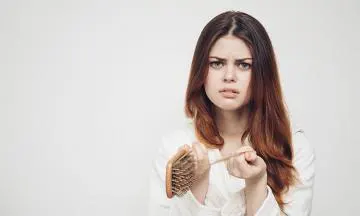

The history of homeopathy
Homeopathy is currently the second largest system of medicine in the world, according to the World Health Organization (WHO). It was founded by a German physician Dr Samuel Hahnemann just over 200 years ago.
Painter’s Son Paints the Field of Medicine with Revolutionary Colors
Dr Samuel Hahnemann was born on 10th April 1755 at Meissen, a small town in Germany, to a poor porcelain painter. Poverty however, did not deter Hahnemann from studying and he went on to practice medicine. He was one among the very few of his time to graduate with an MD from Leipzig University, Germany. Conventional doctors during that time routinely used bleeding and excessive purging to treat diseases, as they thought that diseases were caused due to bad blood within the body. Hahnemann was thoroughly disenchanted with the state of medical practice during his time. He therefore gave up his medical career!
Hahnemann’s Eureka Moment
With no financial backing, to support his family, Dr Hahnemann started translating medical books in different languages, as he knew over a dozen languages. Whilst once translating William Cullen’s Lectures on the Materia Medica, he came across a statement that said cinchona [quinine] bark possessed specific febrifugal [fever-relieving] properties, because it was one of the most aromatic and bitter substances known. This aroused his scientific mind and curiosity. He felt that there were many substances that had bitter and fragrant properties. None of them however had the strength to cure fevers, especially malaria-like fevers. He was eager to test the idea. He drank a decoction of cinchona bark to test the results and developed a malarial like fever with chills. This was a Eureka moment for Hahnemann and laid the foundation for homeopathy!
Dr Hahnemann expounded his principle for homeopathy: Likes cures Likes. What does it mean? It means that the substance, which can produce a set of symptoms in a healthy individual, can treat a sick individual who is manifesting a similar set of symptoms.
For example, when you chop onions, you have watery eyes, a runny nose, you sneeze, cough and all of it happens due to exposure to the tuber’s active substances. The homeopathic remedy, Allium Cepa, made from red onion, can help you overcome a cold or allergy attack in which you may have similar symptoms – watery eyes, runny nose, sneezing, coughing, or throat irritation.
Dr Hahnemann came with numerous medicines that were made from natural substances and worked well in curing several ailments without causing unpleasant side-effects.
Vicious campaign of ‘bullying’ against it takes homeopathy to places
Hahnemann’s idea of a new, sane, humane and gentle system of healing did not go down well with the orthodox or conventional medicine practitioners. This led to his discrimination. Bullying made Hahnemann’s life in Leipzig almost impossible. He was even abused and, also not surprisingly, hounded out of town.
His family scrubbed laundry with raw potatoes, because they could not afford soap. Worse still, he lost one of his newborn sons in a carriage accident when he was hounded from one town to another by his detractors. He also lost his wife to extreme poverty. Thrown out of one place, he travelled to another, but continued his homeopathy practice wherever he went. Homeopathy thus reached wherever Hahnemann travelled, across countries! Hahnemann finally moved and settled in Paris, France, which even today is the largest contributor to homeopathy in the world followed by Germany.
Global acceptance & growth across US, Europe, India and other Countries
Homeopathy was introduced to the United States in 1825 by Hans Birch Gram, a student of Hahnemann. Throughout the 19th century, dozens of homeopathic institutions appeared in the US, and by 1900, there were 22 homeopathic colleges and 15,000 practitioners across United States. The success of homeopathy led to the abandonment of harmful treatments of bloodletting & purging and people moved towards more effective and safer medication. The popularity of homeopathy however led to its criticism by mainstream practitioners. The opposition finally led to closure of several homeopathic institutes and the last school in the US exclusively teaching homeopathy closed in 1920. However, by the mid to late 1970s, homeopathy made a significant comeback and sales of some homeopathic companies increased tenfold.
Likewise, homeopathy received acceptance and grew in several countries including UK, where till the present times, it enjoys royal patronage (The Royal family has used homeopathy for three generations), UAE, Brazil, Chile, Mexico, and Switzerland.
Homeopathy came to India in 1810 when Dr. John Martin Honigberger, a French traveler, who learnt homeopathy from Dr Hahnemann, visited India and treated patients. On his second visit to the country in 1839, he treated Maharaja Ranjit Singh, the then ruler of Punjab, who was suffering from a paralysis of the vocal cords. Dr Honigberger treated him with a homeopathic remedy Dulcamara.
Pleased with the results, the Maharaja encouraged Dr Martin to continue homeopathic practice in India. Later, a large number of missionaries, some members of the Indian administrative police and foreign services, practised homeopathy with an intent to reach its benefits to many more people. Here onwards, started the journey of homeopathy in India. Homeopathy was legalized in India in 1948.
Standing Tall Even Today & Growing Exponentially
Today, homeopathy being the 2nd largest system of medicine in the world with an estimated market size of over Rs 26,000 crore, is trusted by over 50 crore people across more than 80 countries in the world. In the last few years, homeopathy has grown three times faster than allopathy, at the rate of 25-30 per cent annually.
- In England, 42% British physicians refer patients to homeopaths.
- More than a third of the French people use homeopathic treatments. A survey of French pharmacists found that an astounding 94.5 percent reported advising pregnant women to use homeopathic medicines.
- It has been estimated that over 6 million people in the US use homeopathy for self-care, and day-to-day health problems.
- Homeopathy is today followed by over 10 crore people in India. The country has a Rs 3,600 crore organized homeopathy market. There are over 2.25 lakh registered homeopathy practitioners with 20,000 new homeopaths being added every year.
- Over 185 homeopathic colleges in India are offering 33 post graduation courses. Besides, there are 11,000 homoeopathic hospital beds.




